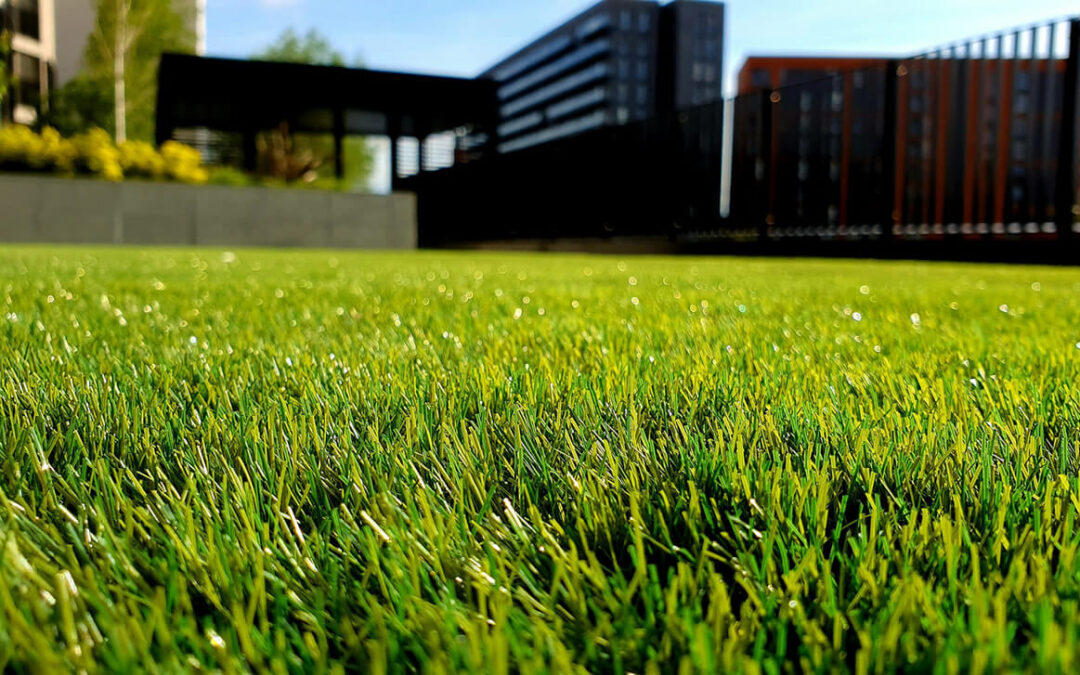If you’ve just moved into a new property, one of the first things you need to pay attention to is your lawn or garden. However, be warned. From keeping your lawn green to staying on top of the pest situation, grass treatment will fill your to-do list with numerous tasks — tasks you may be unfamiliar with as a new homeowner.
Luckily, we’re here to help.
By implementing these seven grass treatment tips, your lawn and garden will be green, healthy, and the talk of your new neighbors.
And here’s the best part:
These strategies are some of the most easily actionable you’ll find anywhere, so don’t worry if you don’t have a green thumb.
Read on to learn more about how you can easily transform and maintain your new lawn.
Know Your Grass
Knowing your grass is the first box to tick off your grass treatment list. Here’s why:
If your lawn needs grass, knowing which type to get enables you to find a variety that aligns with your preferences. With a bit more homework on your part, you’ll also determine what kind of grass can thrive in your area’s climate and environmental conditions.
However, what if there’s already grass on your new property?
In this case, identifying it is essential to helping you take better care of it. By seeing whether you’ve got Bermudagrass or St. Augustine, you’ll know the best ways to water, fertilize, mulch, and cut your grass.
Now there are several varieties of grass, so you might need to do some research. If you’re hiring a landscaper, ask questions about the type of grass you have or want, its watering requirements, and the best season in which to plant it.
Don’t forget to ask about whether or not your soil is conducive for grass treatment and growth. And that brings us to the next tip.
Get Your Soil Tested
The next order of business is soil testing. You need to test your soil to identify several qualities that can inform your grass treatment.
First, soil testing is essential for identifying soil nutrients. Depending on your area, the level of sunlight the soil gets, and moisture levels, your soil will contain several types of nutrients in varying quantities. Some of these nutrients are nitrogen, phosphorus, and potassium, to name a few.
By getting your soil tested, you’ll see what nutrients are abundant in your soil — and, most importantly, where your soil is lacking.
Knowing which nutrients aren’t in your soil can be a game changer in helping you determine what fertilizer to get down the road.
Another reason to test your soil is to find out its pH level. The pH level of your soil can make or break how your grass absorbs nutrients.
The more acidic your soil is, the less nutrients your grass may absorb. By contrast, more alkaline soil is conducive for grass treatment and health.
If your soil is too acidic, you’ll need to grind some limestone and sprinkle it on your soil. Doing this is a must if you want to bring your soil’s pH up to healthier levels.
Fertilize
Fertilizing your grass is a cornerstone of grass treatment as it provides your grass with all the nutrients necessary to promote growth and a healthier color.
When selecting fertilizer, choose based on the results of your soil test and the type of grass you have. Doing so ensures that your grass gets what it needs — no more and no less.
Getting fertilizer from a store is only one way to ensure that your grass gets the nutrients it needs. A more cost-effective and healthier alternative would be mulching.
Mulching involves cutting your grass and leaving the discarded material (or mulch) atop your soil. Doing this allows the soil to reabsorb the nutrients in the cut grass.
To get the best results, it’s essential to cut your grass at the right length, which is where mulching blades come in.
Mulching lawn mower blades can cut your grass finely and the time it takes for you to do so. For the best mulching blades, check out our selection.
Water Your Lawn
You can have all the right nutrients dialed in, but without water, your lawn’s health will remain in jeopardy.
Dehydrated soil not only makes your lawn look like the backdrop of a Spaghetti Western but without sufficient moisture, your soil will also be a breeding ground for brown and brittle grass.
On the other hand, watering your lawn keeps your grass hydrated. As you improve your soil’s hydration levels, your grass becomes greener and healthier as it’s more primed to absorb nutrients.
Now, when it comes to watering, here are a few tips to keep in mind:
First, water your lawn regularly but not daily. Watering your lawn too often and too much can inundate your soil, pushing out nutrients and air. Instead of blasting your lawn daily, give your grass and soil about an inch of water every three days.
Second, consider using a sprinkler. Sprinklers can be total game-changers for your grass treatment since they can hydrate your grass and soil at safer levels.
Keep an Eye Out for Pests and Fungus
As you tend to your new lawn or garden, pests will rear their ugly heads. Left ignored, these nuisances will eat at your grass, leaving your lawn unhealthy and unsightly.
When it comes to pest control, prevention is always better than cure. Here are some of the signs of infestation to look out for:
- Holes in leaves or grass
- Larvae or insects
- Ant hills or mounds of soil
- Brown patches or spots
- Brittle grass
If you see any of these signs, it’s time to contact a local pest control service. However, if you’re DIY-ing your pest control, choose the safe water-based pesticides.
Safe pesticides can target fungi, insects, and other pests while ensuring that your grass and soil remain healthy. Most importantly, water-based pesticides are safe and easy to apply and will pose no little to no health risks to you or your family.
Weed Your Lawn Regularly
Pests aren’t the only thing that can deal damage to your lawn. Over time, weeds are likely to encroach on your lawn, and this can affect the health and growth rates of your grass.
Left ignored, weeds can absorb the nutrients of your soil. The result is fewer nutrients and moisture available for your grass.
Besides robbing your grass of nutrients, weeds can also harbor pests. For this reason, you should begin weeding your lawn proactively to keep your grass healthy.
To weed your lawn, use a dandelion digger and loosen the soil around weeds. From here, pull out the weeds along with their roots.
Once you’ve done that, you’ll have to apply herbicides to prevent weed regrowth. With protective equipment like gloves and goggles, apply some herbicide on the area where weeds used to be.
Choose the Right Lawn Mower Blades
We cap this list off with one of the most common yet critical of all grass treatment tasks — mowing your lawn.
Mowing your lawn is a vital step in ensuring that your grass looks pristine and green. When you mow your lawn regularly, you’ll be amazed at how much better your property’s exterior looks not just to your neighbors but to passersby and realtors as well.
Mowing your lawn doesn’t take much. All you need is a lawn mower and, of course, the right lawn mower blades for the job.
Choosing the right lawn mower blades will depend on the type of mower you’ve got. For example, if you’re using a robotic lawnmower like a Husqvarna, choose Husqvarna blades.
Did you check your lawnmower only to find that it has a six-point star center diameter? If so, you can’t go wrong with one of our standard high-lift mower blades.
Go From Newbie Lawn Carer to Grass Treatment Hero
There you have it!
By implementing our grass treatment tips, you’ll easily transform your lawn and keep it green and pristine for the long haul.
Of course, mowing is going to be a big part of your lawn care. For the best lawn mower blades, look no further than Mowtown Blades.
At Mowtown Blades, we’re your one-stop shop for all brands of blades, including:
- Husqvarna blades
- Toro blades
- Cub Cadet blades
Find your next set of blades at Mowtown Blades today.
FAQs
What’s the Best Watering Schedule for My New Lawn?
The ideal frequency varies, depending on the weather and the kind of grass you’ve got. However, a safe rule of thumb would be to water your grass every three days. Maintaining this frequency keeps your grass hydrated without inundating it to the point of nutrient dilution and suffocation.
How Do I Test My Soil?
Soil testing can help you understand your lawn’s nutrient composition and pH levels. You can get a professional to test your soil or DIY your testing. Testing kits or professional services can analyze your soil, guiding you on which nutrients to supplement and whether pH adjustments are necessary for healthy grass growth.

